The Industrial Revolution

The Industrial Revolution brought an explosion of development. There were new jobs, (particularly in the cities), new goods, and increased trade. However, it also brought new problems to Europe.
Further expansion of the population and mass migration caused explosive growth of cities. The maps to the right illustrate the concentration of population into the cities of England that occurred over 200 years beginning in 1700 as shown in these maps of population density in 1701 and 1911.
Poor workers were often housed in cramped, grossly inadequate quarters. Working conditions were difficult and exposed employees to many risks and dangers, including cramped work areas with poor ventilation, trauma from machinery, toxic exposures to heavy metals, dust, and solvents. Consequently, progress brought a whole new set of health problems that were widespread in Europe and in America.
The photo slider below provides a brief summary of living conditions in England during the 1800s.
Living Conditions in England

During the Industrial Revolution in England, families streamed to urban areas. Builders put up substandard housing on any land close to factories.
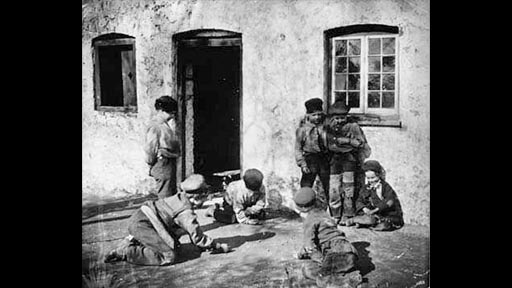
Homes with 2-4 rooms frequently housed families with 4-5 children.

Houses in Northern England were "back to backs" (built in double rows) crammed close together with very narrow streets between them.
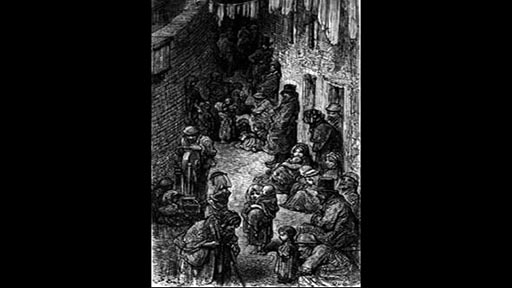
Many lived in "closed courts" with a narrow alley providing entrance to a cluster of apartments for around 350.
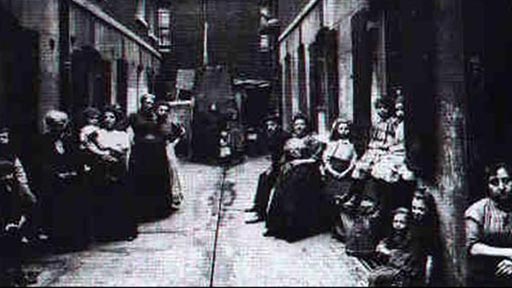
Chimneys, bridges and factory smoke blocked out much of the light in the towns. Coal was used to generate steam in order to power machines for the factories, and coal generated huge quantities of smoke that covered towns like a blanket.

The burning of coal generated smoke and soot that was dense enough to block sunlight. The lack of sunlight was so severe that some children developed rickets.
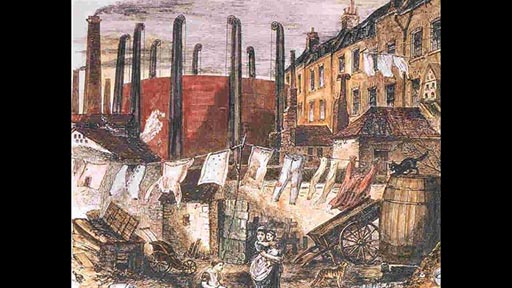
Household rubbish was thrown into the streets, and garbage removal was infrequent.

Outhouse toilets were shared. In Manchester, there were 2 privies for every 250 people in the 1850s. Instead of privies, there was often a tub that required daily emptying. Seven thousand people were supplied with about 30 of these tubs.

Working class families generally had no running water or toilet. Water was obtained from community pumps, but these were sometimes contaminated with sewage.

In London, private companies provided water to businesses and households that could afford to pay for the service. And, the companies that piped water drew it directly from the Thames River (which was also used for disposal of sewage, garbage and anything else that was unwanted.

This is an 1827 cartoon poking fun at "Monster Soup" water from the Thames River.

Outbreaks of cholera killed thousands of people on both sides of the Atlantic.
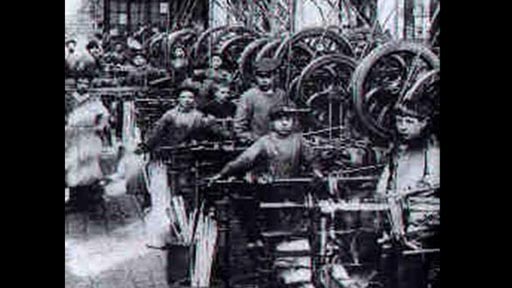
There were also many occupational hazards. Mechanization involved dangerous equipment and there were frequent injuries.

Children were often employed to perform dangerous work for long hours. Many of Charles Dicken's books described difficult times and especially the difficult lot of children.

Children were even employed in mines. Coal mines were subject to cave-ins, explosions and many injuries, but there were few safety rules.

In 1842, the Mines Act was passed forbidding the employment of women and girls and all boys under the age of ten.

Women and children worked in poorly ventilated textile factories using dangerous equipment.
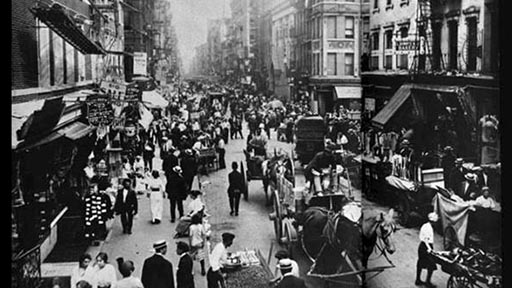
New York's Lower East Side: The US also underwent rapid transition from a rural, agricultural society to an intensely urban and industrial one.

Lifespan in the mid-1800s was shockingly brief, and the heaviest toll was on the working class families. Note: Also see John Graunt's life table for survival in London in Table 1-2 on page 11 of the textbook (Ashengreau & Seage, 2nd edition)
